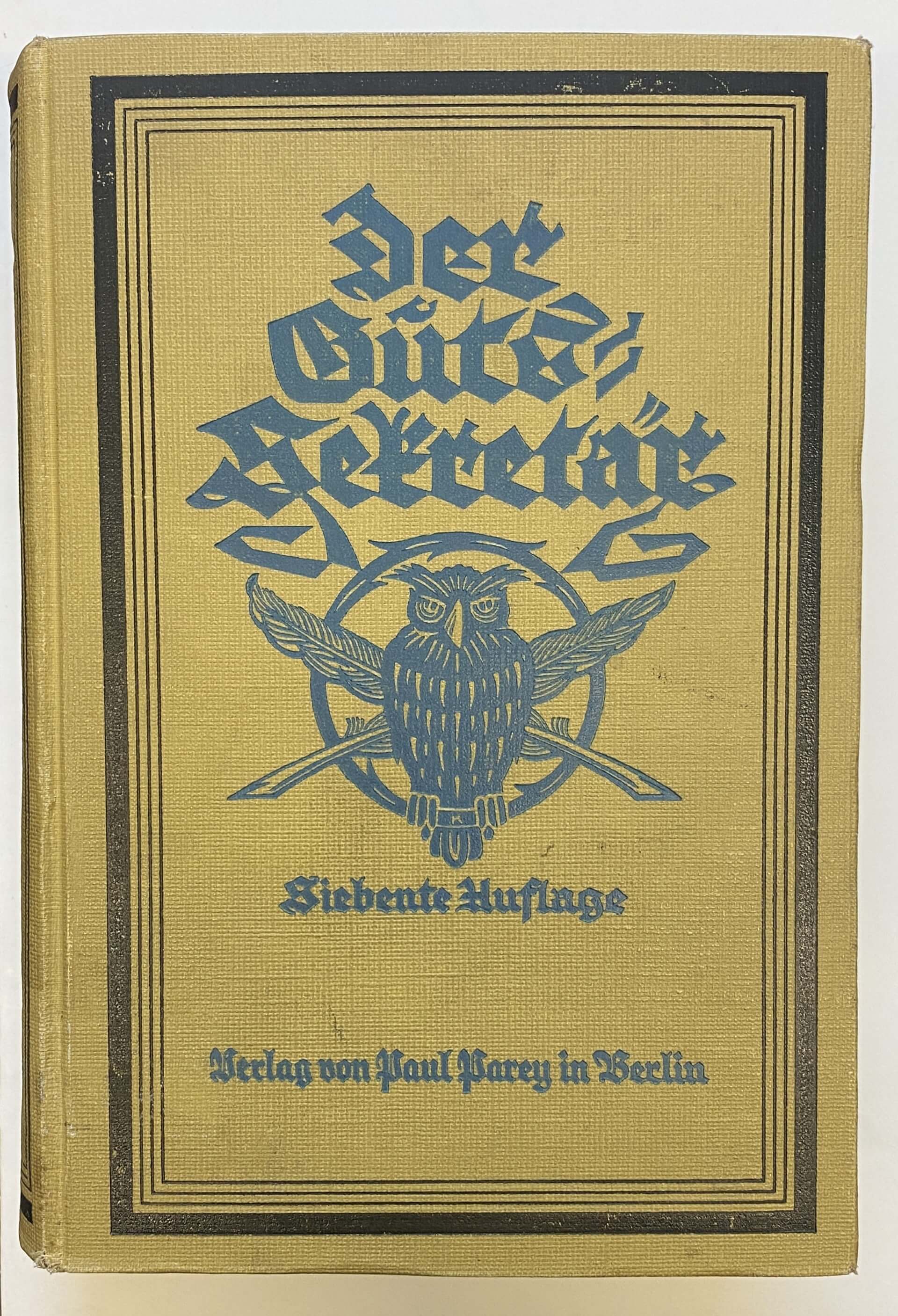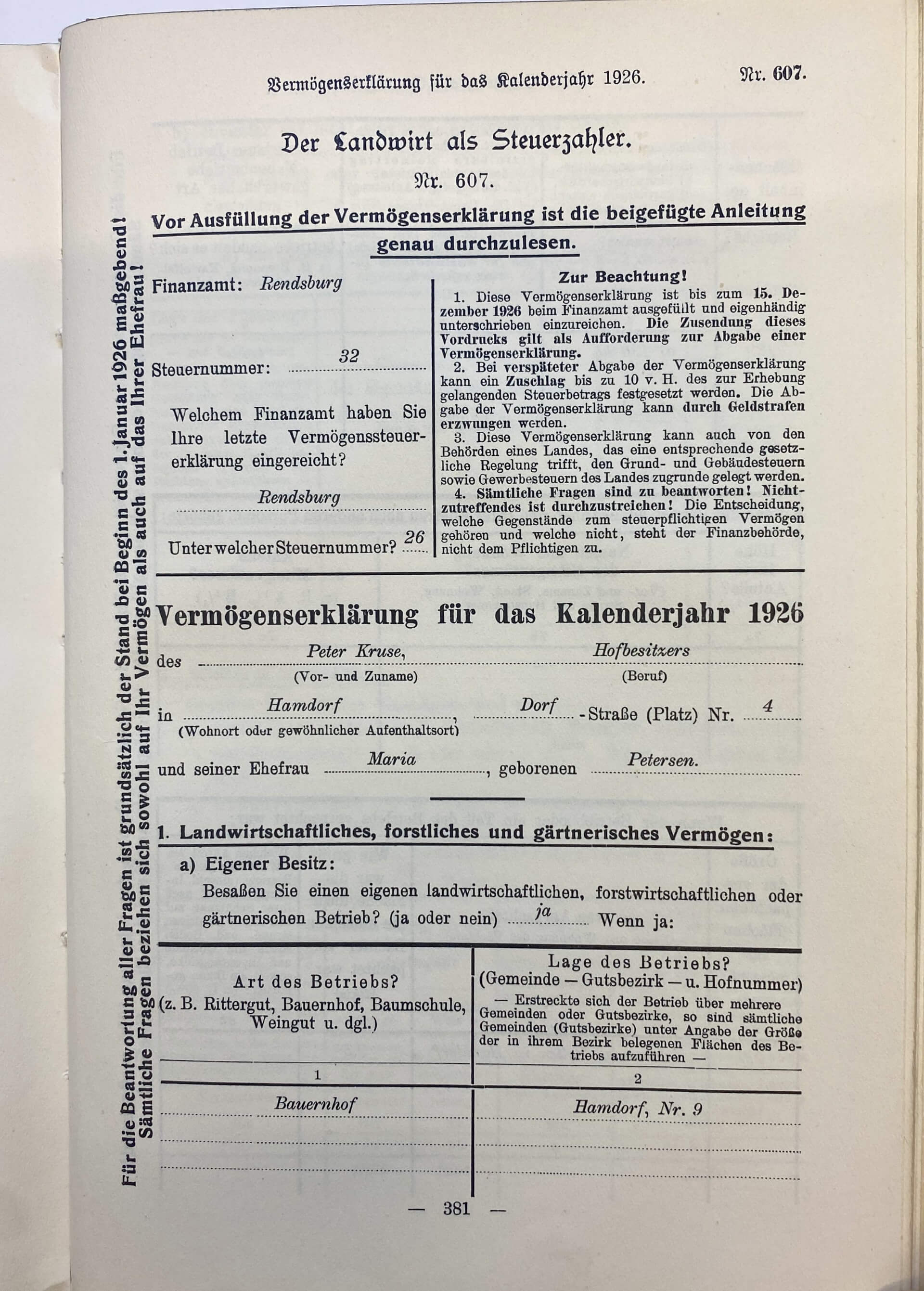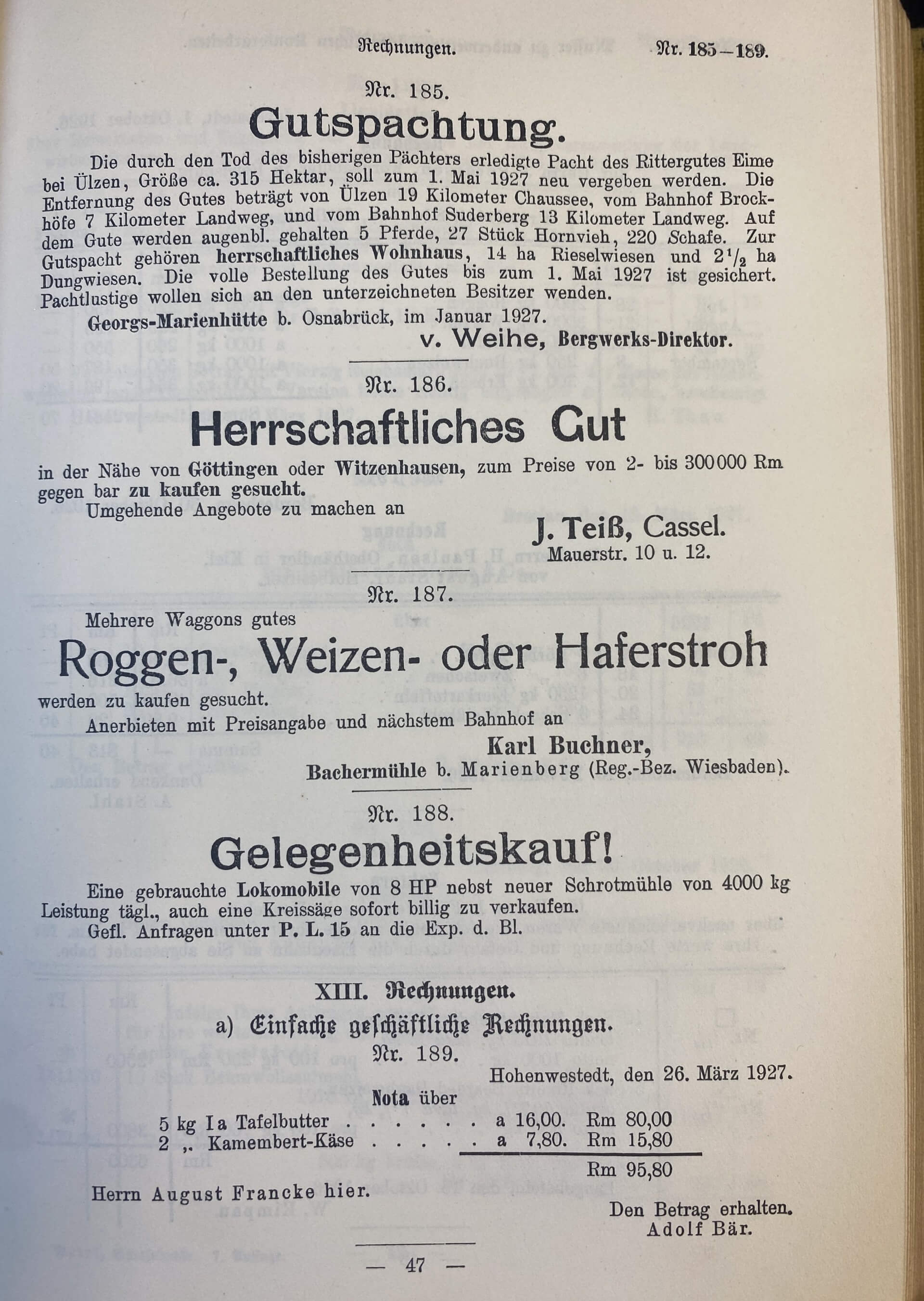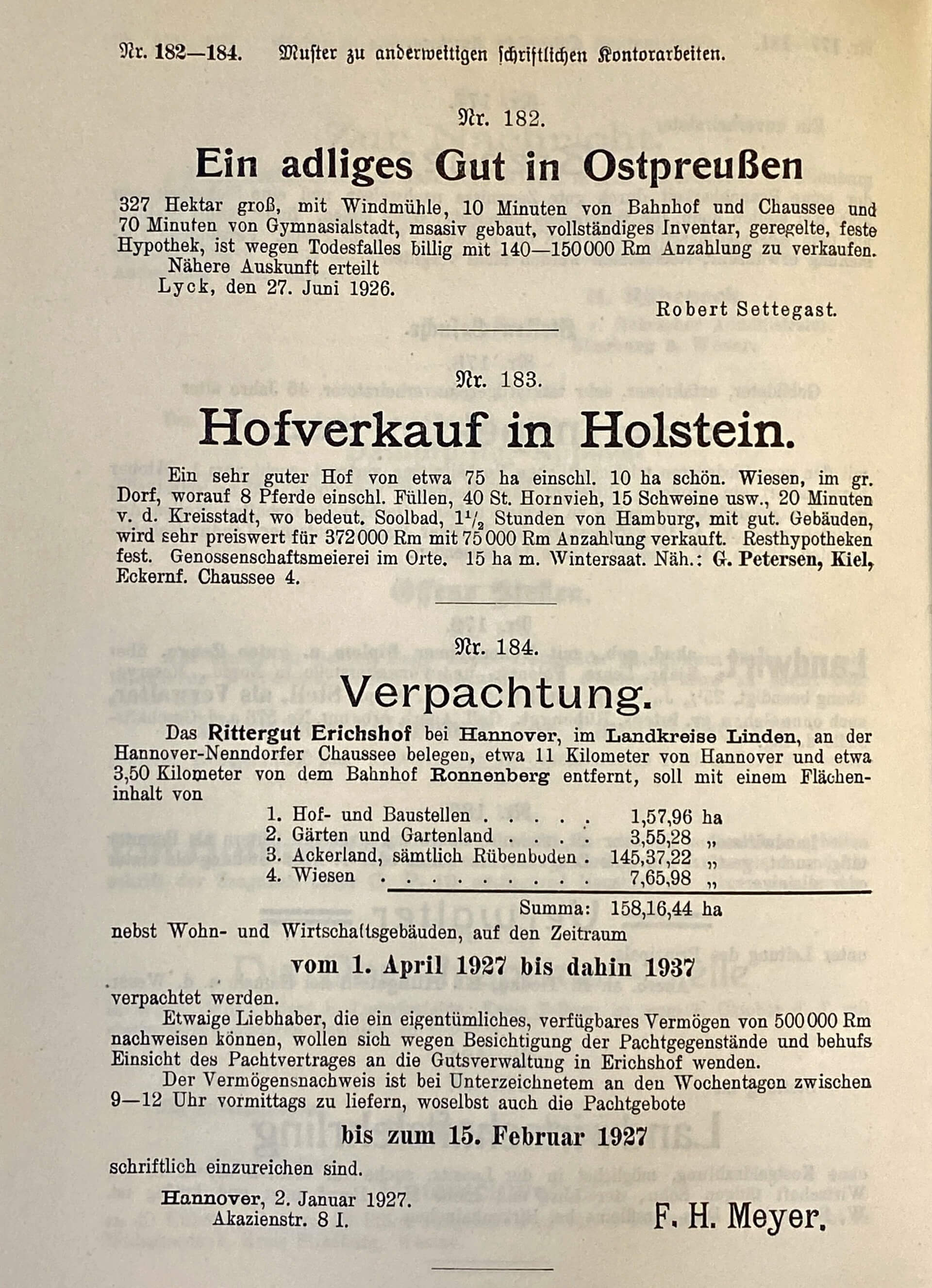18.06.2024
A „secretary“ in book form: help against bureaucracy

Contact
Gabriele Blömker
02501 801-1670
gabriele.bloemker@lv.de

Bestseller at the turn of the century: „Der Guts-Sekretär - Geschäftshandbuch für den deutschen Landwirt“ was first published in 1897 - there were seven new editions in three decades. Here is the title page of the 1927 edition.

Even a good 100 years ago, no tax return could fit on a beer mat: sample tax return from the book „Der Guts-Sekretär“ from 1927.


How do I write a good sales advertisement? - The book „Der Guts-Sekretär“ from 1927 offered its readers a wealth of text examples.
Despite all the cherished legends, farmers of previous generations also had to deal with bureaucracy, forms and tedious paperwork. „It is undeniable and understandable that the farmer does not like to deal with written work“ - this is the opening sentence of a more than 100-year-old book entitled „Der Guts-Sekretär - Geschäftshandbuch für den deutschen Landwirt“. Most farmers, it says, „are threatened by the written work growing over their heads“. It goes on to say: „Change was needed here and a book had to be written that could replace a printed farm secretary made of flesh and bone.“
The book is one of the most unusual publications kept in the „Westphalian Library of Agriculture“ in Münster-Hiltrup. On more than 400 printed pages, it contains around 600 sample letters, forms and advertisements for every occasion and purpose.
The author of the work was Karl Petri, a teacher at the „Landwirtschaftliche Lehranstalt“ in Hohenwestedt in Holstein. He wrote several books of advice and economic reference books, such as „Handelskunde für den Landwirt“ (1912) and „Landwirtschaftliches Arbeiterwesen und Landwirtschaftliches Genossenschaftswesen“ (1921). The „Guts-Sekretär“ was his most successful and most frequently published work. By 1927, seven new editions had been published - a copy of the seventh edition is kept in Münster-Hiltrup.
The Berlin publisher Paul Parey had suggested the guidebook, which was first published in 1897 in his „Verlagsbuchhandlung“ in Berlin. The idea was in the air, because towards the end of the 19th century, the demands of the modern industrial and administrative state had also grown considerably for agriculture. More than ever before, farmers had to deal with authorities and courts, but also with the banks and cooperatives that were emerging at the time. Moreover, very few people knew how cashless transactions worked, how court proceedings worked or what a rural community leader had to consider.
Answers were provided by the printed „Guts-Sekretär“. This standard work was found on almost every large farm or estate in Germany. Today, of course, it is long outdated. The original texts are long out of date, and some of them sound unintentionally funny. But the book provides an extremely vivid, in-depth look behind the scenes of a farm around 1900 and is an excellent source on everyday life in the countryside at that time.
The „Westphalian Library of Agriculture“ (WBL) in Münster-Hiltrup contains around 6500 volumes of practice-oriented agricultural literature from five centuries. There is a regional focus on titles from Westphalia-Lippe and Northwest Germany. The collection is owned by the Stiftung Landwirtschaftsverlag in Münster and is organized as a reference library. Those interested in agricultural history can search the collection digitally (WBL collection) and use the books on site after prior registration.